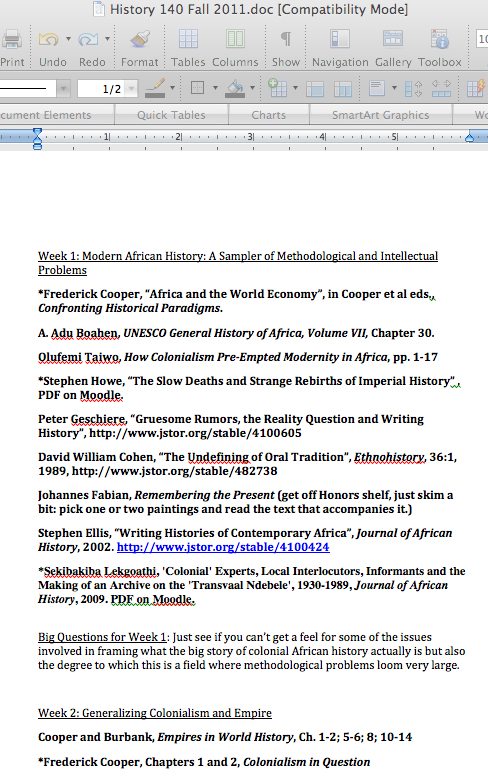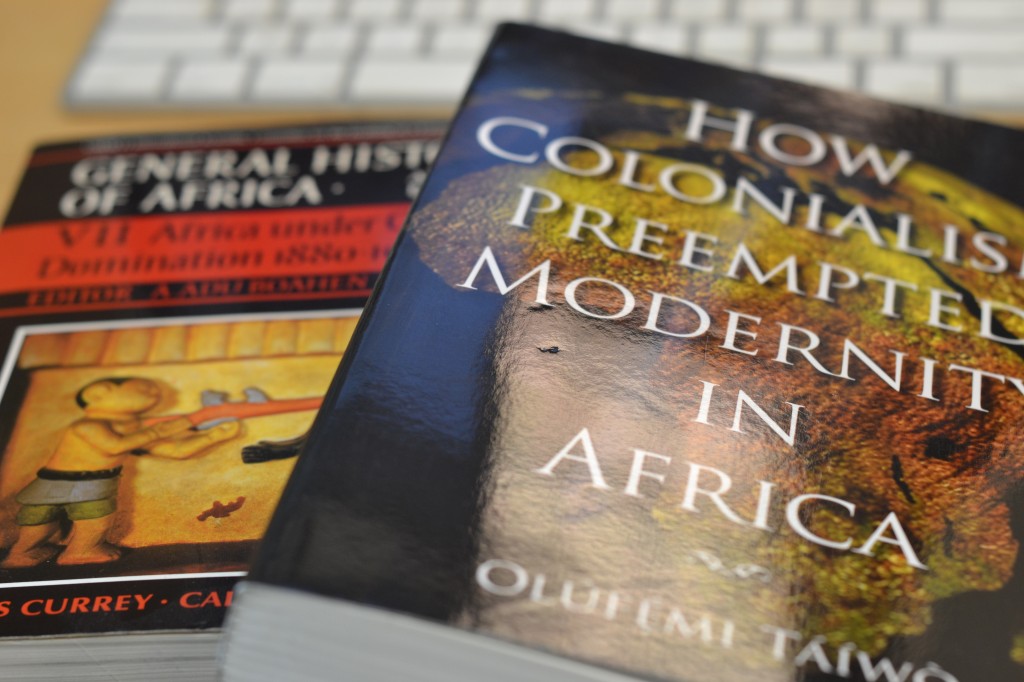I usually spend time in the last half of the summer, somewhere around the end of July onward, working on the design of upcoming courses. I think I’m probably at one end of a spectrum as far as making more work for myself in terms of course preparation and syllabus construction: I would guess that over 17 years or so at Swarthmore I’ve taught on average about 1.5 new courses a year. I don’t think I’ve ever had a year without at least one new course. I also tend to rip up and redesign established courses, even when there hasn’t been any issue with them. It’s just how I focus my attention on near-term teaching. I try to keep my survey courses a bit more stable as it seems to me that there should be some continuity between each iteration, but even there I try to have three or four substantially new readings each time.
Syllabus maintenance and construction is one of the quintessentially invisible parts of a professor’s job. I’m still stunned from time to time that many people outside of academia or education think that a professor or teacher just walks into a classroom and recites knowledge at students. I read a large range of books and essays that never make it into the syllabus as I’m thinking about lectures or discussions I’d like to convene. I look back over evaluations and consider how past assignments have worked or not and what kinds of pedagogical tweaks or experiments I might try in a given course. I’m usually still shifting around a few things here and there a day or two before the semester starts. (Well, and afterwards, but that’s a different kind of project.)
There’s also a lot of annoying logistics to deal with most semesters. Right now I’m shifting some readings onto Moodle from Blackboard, which just takes a bit of adaptive adjustment to Moodle’s interface and design. Courses that make more use of technology or have more ambitious media usage require a bit more logistical foresight.
I spend a certain amount of time during the summer thinking about courses I might teach in the future as well. That’s the best time to read and explore in new areas, not just because my schedule is a bit looser but also because I’ll need to be ready when the deadlines to get new courses on the schedule hit in the middle of a busy semester.




Starting the last week in July sounds about right, but I wonder how many faculty give themselves enough time for this task. Certainly changing CMS requires at least a month, but for a normal summer, I think that month is needed for the complete revisions in design and content that so often happen. Waiting until the last weeks of August just ensures that faculty are going to just reuse something from past years. (Of course, that past stuff is brilliant.) Anyway, enjoyed reading about your strategy above, and was wondering whether ITS had stats about when faculty make first edit for new school year. Even if collected without names it would be a fascinating dataset.
As a technical aside, isn’t Moodle different!? I’ve really enjoyed the switch, but some of that is just enjoying the nudge to redo. The lack of folders really increases the transparency of one’s syllabi, I think, and that’s a good thing. But on a down note, it takes much, much longer to engage in massive reorganizations of complicated syllabi.
Yeah, I wonder also at data both from ITS and our AAs about when faculty get “real” about updating work, say, in terms of making scans of new readings.
Moodle is more different than I thought it would be. I was already used to it as a way to coordinate shared documents in committees but the course management setup takes some getting used to.
I wonder if there’s actually any studies out there of syllabus formatting, and how faculty handle complicated syllabi of various types.
This is not the point of the blogpost, but seeing the Colonial Encounters syllabus brings back so many memories – mostly good ones of class and reading and writing, but also of being yelled at in my honors exam because I used the word ‘hysterical.’